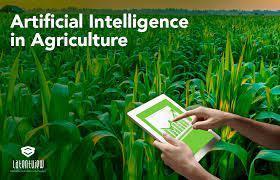Weed Detection using oneapi
PROBLEM STATEMENT
Farmers are experiencing significant crop loss due to ineffective weed management, which results in decreased yield, increased costs, and environmental harm. Current weed detection methods are time-consuming, unreliable, and require manual labor. The lack of efficient weed management solutions results in decreased profitability for farmers and increased food prices for consumers. The solution to this problem is to develop a weed detection system that is accurate, efficient, and easy to use for farmers. This system could include the use of OneAPI technology to analyze images of crops and identify weeds, enabling farmers to make timely and informed decisions about weed management. The development of this system would significantly reduce crop loss, increase yield, reduce costs, and promote sustainable agriculture practices.

SOLUTION
Our proposed solution involves collecting a large dataset of images of crops and weeds, preprocessing the data, selecting and training a machine learning model using OneAPI's Data Parallel C (DPC) or TensorFlow, and deploying the trained model in the field using an edge computing device such as Intel's OpenVINO toolkit. The system will allow farmers to take timely and efficient action to prevent weed growth, reducing crop loss, and improving yield.
To evaluate the effectiveness of the system, we will use metrics such as accuracy, precision, recall, and F1-score to assess the model's performance. We will also track the impact of the system on crop yield, cost reduction, and environmental sustainability.
The proposed solution assumes that the dataset of images is representative of the weeds and crops found in the area, and that the trained model can generalize well to new data. The system's constraint is the availability of high-quality images to train the model and edge devices with sufficient computing power to deploy the trained model in the field.
We chose OneAPI technology due to its ability to leverage both CPUs and GPUs, resulting in high-performance computing and improved accuracy. We will also use the OpenVINO toolkit for deployment in edge devices, ensuring the system's scalability and usability.
The proposed solution is relatively easy to implement, and its effectiveness will depend on the quality of the dataset, the performance of the machine learning model, and the availability of suitable edge devices. The solution is scalable and can be deployed in different regions and crops, and its usability can be enhanced by providing user-friendly interfaces and training materials. Overall, the proposed solution will significantly improve weed management in agriculture, leading to increased yield, reduced costs, and environmental sustainability.
Idea: weed detection and elimination in agricultural fields using computer vision and machine learning
**GITHUB Code : https://github.com/ABHIJATSARARI/Intel_oneapi_hackathon **
To run application cone the githu repo and you need to install visual studio , this is a prototype only !!! Download weight file from weight.txt file and paste it into application folder Install packegs from requirement.txt to create needed enviroment and veriables There is three implamentation for problem
PythonApplication2.py ---- Scalable and WOW factors implementation for solving problem.
app.py ----- Scalable solution with intel vino inference engine.
PythonApplication1.py ------ Simple approach with intel onpe api base toolkit.
pythonapplication ---- vs export